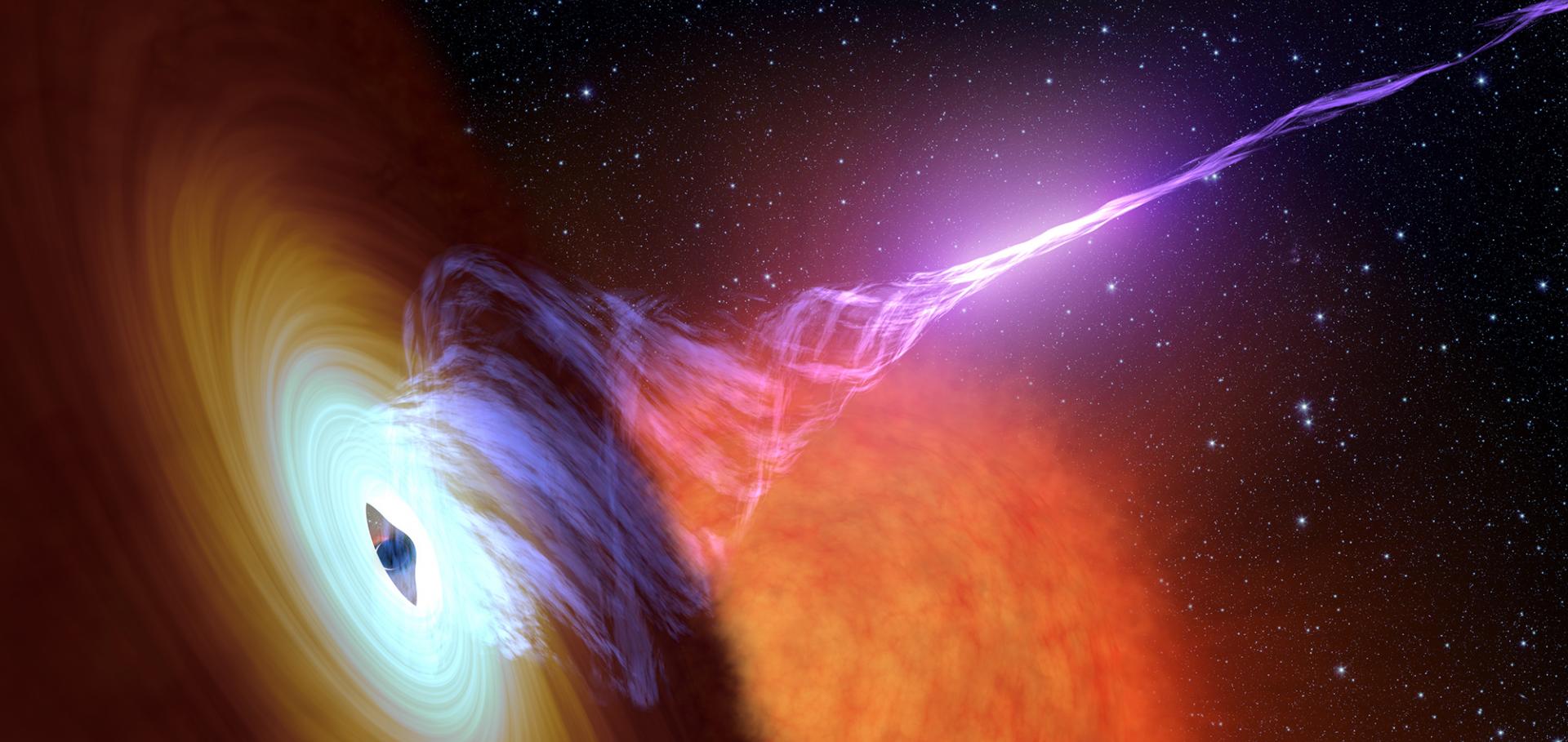Flares, wind and nebulae: the 2015 December mini-outburst of V404 Cygni
EVIDENCE FOR SIMULTANEOUS JETS AND DISK WINDS IN LUMINOUS LOW-MASS X-RAY BINARIES
Evidence for magnetic field compression in shocks within the jet of V404 Cyg
Abstract:
We present optical and near-IR linear polarimetry of V404 Cyg during its 2015 outburst and in quiescence. We obtained time-resolved r΄-band polarimetry when the source was in outburst, near-IR polarimetry when the source was near quiescence and multiple waveband optical polarimetry later in quiescence. The optical-to-near-IR linear polarization spectrum can be described by interstellar dust and an intrinsic variable component. The intrinsic optical polarization, detected during the rise of one of the brightest flares of the outburst, is variable, peaking at 4.5 per cent and decaying to 3.5 per cent. We present several arguments that favour a synchrotron jet origin to this variable polarization, with the optical emission originating close to the jet base. The polarization flare occurs during the initial rise of a major radio flare event that peaks later, and is consistent with a classically evolving synchrotron flare from an ejection event. We conclude that the optical polarization flare represents a jet launching event, the birth of a major ejection. For this event, we measure a rather stable polarization position angle of −9° E of N, implying that the magnetic field near the base of the jet is approximately perpendicular to the jet axis. This may be due to the compression of magnetic field lines in shocks in the accelerated plasma, resulting in a partially ordered transverse field that have now been seen during the 2015 outburst. We also find that this ejection occurred at a similar stage in the repetitive cycles of flares.


